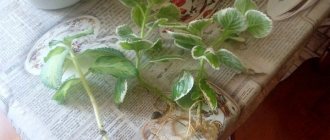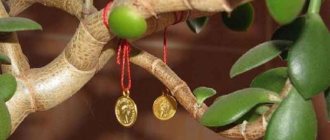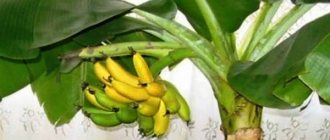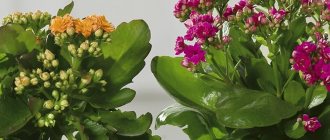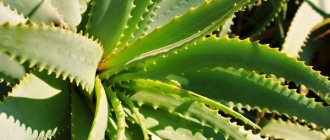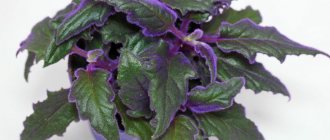Have you ever thought about how to grow banana at home? Consider growing an exotic plant such as a banana. This is a simple but unusual way to have lush foliage and a full supply of delicious fruit all year round. Instead of ordinary house plants, growing a banana will add freshness and greenery to your home, and of course positive emotions from its beauty and exoticism.
Banana trees are not often grown at home, despite the fact that we all love the fruits of this tree. By planting a banana tree, you can create a stunning, large and very chic tropical retreat in your home. With proper and good care, a banana will grow very quickly, beautifully and brightly filling a corner or window of your house. However, there is one drawback. Don't expect so much to actually harvest bananas. Unless you live in the tropics or have a large greenhouse, your plant may not have enough time and favorable conditions to flower and develop fruit. Instead, focus on growing banana plants for their beautiful and signature foliage, for the aesthetic pleasure of beholding a wonderful exotic plant.
What is a banana plant
Bananas are perennial plants and are considered herbaceous plants. Contrary to popular belief, their trunks are not wooden. Instead, their stem is created from layers of leaves wrapped around each other to form a trunk. Each banana plant grows from a bulb from which a true stem grows. The stem develops through the center of the stem, which subsequently produces fruit.
Each stem supplies a massive flower cluster that turns white. Another stem grows in its place. This process is repeated until the tree bears fruit, usually after one year of cultivating the new plant. To speed up the process, potassium-rich fertilizers are recommended.
The suckers (puppies) that grow at the base of the plant can be removed to propagate new plants. Once the plants have matured and produced fruit, it is important to leave at least one cutting in place as the mother plant may die.
Which banana to grow at home
Most banana plants are sold as bulbs or corms. They can be special ordered or purchased from various suppliers online. When you receive your plants, rinsing them in warm water will ensure that any fungal deposits, debris and bacteria are removed before planting. This will ensure the plant is properly potted and established at its maturity.
When purchasing, the height of the plant usually determines the choice. Dwarf banana plants are suitable for apartments or cottages. Giant banana trees can be suitable for large homes with vaulted ceilings as long as all requirements are met, such as warmth, no drafts and plenty of sunlight.
Domestic banana trees typically grow anywhere from 1.5 to 3 meters and many varieties of banana are available nowadays.
The most common of them are the following types:
- Dwarf Cavendish
- Super Dwarf Cavendish
- Dwarf Lady's Finger
- Jamaican Dwarf
- Dwarf Brazilian
- William hybrid
- Grain Nain
- Rajapuri
- Musa Basju (does not produce fruit)
Conditions for growing bananas at home
- Light: Banana trees grow in full sun or light shade.
- During the growing season, banana palms need plenty of water. Water the plant generously and expect it to use more water as it grows. The plant will need to be watered daily.
- Temperature: These plants bloom at temperatures of 25 C and above. If you are maintaining the plant during the winter, try to keep the temperature as warm as possible, with a high humidity environment.
- Soil: Use a loose, well-drained, very nutrient-rich mixture.
- Fertilizer: Fertilize generously.
Where to start planting bananas at home
Soil is one of the most important ingredients when growing banana at home. Bananas thrive in well-mixed soil with plenty of perlite and vermiculite. The soil should be light and with good drainage. Garden soil or potting mix for regular houseplants is too heavy and will hinder the plant's growth. For good drainage, you can add 20 percent perlite to the soil mixture.
The initial stages of banana plant development should begin in a standard medium-sized container with a drainage hole in the bottom to prevent water stagnation and provide proper ventilation for developing roots. Once a banana plant is planted, it will need a combination of bright light, warmth and high humidity for the leaves to begin to sprout.
Plant the rhizome vertically, leaving the top uncovered to allow light exposure. When a few new leaves appear, the corm can be completely covered with soil to promote better stability and additional root growth. Transplanting into a larger container will become necessary for the plant to bear fruit.
Banana propagation at home
Banana trees are very easy to propagate due to their unique growth habit. The true banana "trunk" is a really large stem made up of old leaves that grow from the rhizome. In nature, each stem grows to maturity, flowers, bears fruit, and then dies. Meanwhile, the underground rhizome continuously sends up new shoots to keep the plant active.
In banana plantations, gardeners typically trim off additional stems as they emerge, so each rhizome will have only three stems at any given time: one immature stem, one flowering stem, and one fruiting stem. This ensures stable growth of bananas. So propagating bananas is a simple matter of digging up and dividing new stems as they appear, making sure they include some rhizomes and roots.
Watering a banana at home
Regularly watering the plant with enough water will retain moisture in the soil and reduce the chance of the bulb dying before it begins to grow. A delicate balance must be maintained, as overwatering can damage the plant just as much as underwatering. Because of its massive leaves, the banana plant needs a lot of water, but it should not be exposed to excessive amounts of moisture as this will lead to bacterial growth and plant root rot.
The soil should be allowed to dry out slightly between waterings and watered again as needed. To prevent premature evaporation, the top layer of soil can be covered with a layer of decorative mulch, bark or moss.
Diseases and pests
Indoor banana is vulnerable to root rot, thrips, scale insects, and spider mites, which are well known to home plant lovers. It is important to correctly identify the type of pest, since most chemical preparations have a narrow focus - insecticides are used against insects, acaricides against ticks, and fungicides against fungi. This link will tell you about the principle of action of phytosporin for currants.
Immersing the affected parts of the plant in water at a temperature of +50-55°C helps to get rid of the nematode. Pests cannot withstand this temperature and die, but such heating is safe for the plant.
But bananas also have special enemies that can destroy entire plantations. These include nematodes, which chew through the stem from the inside, and black weevils, which make tunnels inside the stem. Houseplants, such as lemon, mango and others, are mainly infected by these pests through the soil, so it is recommended to steam soil brought from nature. Read about the description and characteristics of the Mantet apple tree variety in this material.
What soil to use for banana plant.
Bananas will grow in almost any soil, but to ensure that you grow a healthy plant that produces delicious fruit, you must provide the ideal conditions for your plant.
The ideal soil you should use is loam-based compost. This is compost, which is a mixture of sand, silt or clay and organic matter.
Sandy loam compost is particularly good at absorbing water and moisture so it will stay moist
How to feed bananas at home
The banana plant can be watered and fertilized at the same time by mixing liquid fertilizer with the appropriate amount of water. Following the manufacturer's instructions usually produces the desired results and prevents excess chemicals that can damage the root system.
Fertilizer should be applied when the plant is about to reach maturity. During this time, the growing leaves will need an excess and constant supply of nutrients to result in a fruitful harvest. The simplest sign of a healthy banana plant is the continuous growth of flowers. This unusually means the plant is ready to produce fruit and needs constant nutrition.
During the growing season, I would recommend feeding your banana tree once a week.
Use a fertilizer that is high in potassium, magnesium and nitrogen as this will help stimulate the growth of your plant. You can use either liquid fertilizer or granular fertilizer, which will dissolve into the soil when you water it.
It is best to look for a fertilizer that is specifically for tropical plants. If you can't find it, then use a balanced fertilizer, which is 20-20-20.
During the fall and winter months, reduce the amount of fertilizer to only once a month.
Planting and fertilizing
Transplantation is carried out annually using transshipment. Before this, it is better to stock up on several pots with a larger diameter than the previous one. Before planting, pay attention to the condition of the sprout - if it is winter, the flower will need time to adapt to climate changes. If traces of yellowing are noticeable on the leaves, and the roots are protruding from the bottom of the pot, it is better to wait until spring to replant. First, the roots of the sprout need to be treated in a pink solution of potassium permanganate for 5 minutes. All unhealthy roots should be cut off, and the cut area should be treated with crushed charcoal.
The substrate for transplantation and fertilizer are made up of several ingredients. The most common are humus, leaf soil and sand (used in various proportions). It is necessary to feed the tree periodically; if there is flowering and growing season, it should be fertilized once every two weeks. Then you can increase the time to 2 months.
Humidity and light when growing bananas at home
What should the humidity and light be like to grow a banana at home? The location on the south side of the apartment is ideal for banana plants. In nature, they thrive in indirect sunlight, partially blocked only by surrounding vegetation. Daily, 12-hour sun exposure combined with heat is the ultimate goal to bring the banana plant to its optimal health. If this is not possible, then 100 watt high intensity artificial light will replace natural light.
The plant should be rotated periodically to ensure that all sides of the plant are evenly exposed. It is also important to keep it in a draft-free area. Banana plants favor a calm environment and sudden temperature changes.
High humidity levels can be achieved by placing bowls of water around the plant. The vapor from the bowl will create enough moisture in the air to keep the plant evenly hydrated. The leaves require constant moisture to continue producing flowers and fruit.
Air and soil humidity
An important factor for the successful growth of velvet banana is the constant maintenance of high air humidity - the indicator should be between 50-70 percent. The best solution in this situation would be to choose a tray with expanded clay - pour a little water so as not to touch the bottom of the pot. This way the expanded clay will constantly remain moist, which will prevent the plant from drying out. To speed up growth, you can additionally spray the leaves with warm water. Another convenient device for maintaining the required level of humidity is a regular household humidifier.
How to grow banana at home
As with any natural cycle, the banana plant will periodically lose its leaves. Cutting them off can lead to fungal infections and should be avoided. The plant's leaves naturally turn yellow, brown, and then become dry, wrinkled, and fall off. This natural process allows the plant to reabsorb nutrients from dying leaves and thrive without interruption.
Banana plants are not susceptible to pest attacks and require very little care to keep the plant healthy and strong. Keeping it clean will prevent any mite colonies from forming. Washing the leaves with warm soap and water will keep the leaves shiny and free of dust.
Indoor banana plants can be moved outdoors during the summer months to expose them to natural sunlight and strengthen the plant during the winter months it will spend indoors. To minimize any disturbance to the tree or root system, moving platforms should be used when moving the container to another location.
How to plant and how to care: step-by-step instructions
To understand the needs of a plant, you need to know in what natural conditions it lives in its homeland. Knowing the characteristics of the tropical climate, it is not difficult to create conditions for your banana in which it will feel best. This article will tell you about the benefits and harms of blue onions.
How to choose a pot and soil
The banana has a large rhizome, so it needs spacious pots for transplanting. A purchased seedling up to 20 cm high is transplanted a month later into a 2-3 liter pot. For a half-meter plant you need a 15-liter pot. The maximum volume of a pot for an indoor banana is 50 liters; you can plant a plant more than a meter tall in it.
If the rhizome is still small, then such a huge pot will be harmful to the plant.
The soil mixture for growing orange and banana must be very nutritious. The best composition is to take a couple of liters of coarse sand, half a liter of crushed wood ash and a liter of humus for a bucket of rotted leaves (except poplar, oak, chestnut leaves). The mixture must be moistened and steamed well over a fire to kill pests. At the bottom of the pot there must be holes and a drainage layer made of expanded clay, crushed stone, or broken brick.
How to water
It is best to water the banana in a tray, wait a few minutes until the top layer of soil gets wet, and then drain the rest of the water. The water should be slightly warmer than room temperature, settled or boiled. The next time you need to water the plant when the top layer dries to a depth of about 3 cm. In winter, you need to wait for deeper drying - about 5 cm. Watering time cannot be determined according to the schedule. This should be done only according to the condition of the soil. Read about growing the Anzur onion variety here.
Feeding and fertilizers
They feed the banana every week during the growing season; it is better not to do this in winter. It is best to alternate mineral and organic fertilizer. Mineral is diluted according to the instructions. As an organic fertilizer, dilute 200 g of humus in a liter of boiling water, infuse this mixture for 24 hours and spill the soil until the liquid flows into the pan.
Any fertilizing is done in moist soil and during the daytime.
Transfer
When replanting, it is necessary to bury the banana stem into the substrate so that it grows additional roots. It is advisable to do the transshipment without shaking the roots off the ground, so as not to damage them. You just need to pull out the drainage that has gotten between the roots. After transshipment, abundant watering is necessary until water comes out of the drainage hole.
It is recommended to place the banana pot on 3-4 pieces of tile so that there is air access to the drainage hole.
Trimming
The only type of banana pruning involves removing dying leaves. But if the plant is many years old, it has stretched out, but has not bloomed, you can cut off its stem so that new shoots will come from the rhizome. This will help rejuvenate and propagate the plant.
Benefits of bananas at home
The nutritional value of bananas has been recognized for many centuries. Due to the fact that they are rich in potassium and magnesium, they significantly help both the cardiovascular and digestive systems, strengthening heart health and promoting proper metabolism. Bananas lower blood pressure and reduce the risk of stroke. With their high levels of fiber and pectins, bananas create positive intestinal flora and help support overall digestive health.
Banana trees are beautiful even if they don't produce any fruit. They are very beautiful houseplants in their own right and bring a tropical feel to any home. Their unusual appearance adds a special touch to any home, and because they are quite easy to grow, they are also popular with many home gardeners.
What is the best variety of banana plant to grow at home?
When you are deciding what type of banana plant you want to grow indoors, you should know that not all varieties produce fruit.
Also, remember that full-size banana plants can grow quite large, so I always recommend a dwarf variety for indoor growing.
Different varieties of bananas have different tastes. So you may want to research this before deciding which variety to grow.
The most popular banana variety for growing indoors is the Super Dwarf Cavendish variety, as it only grows to 1.2 meters.
Other varieties suitable for growing indoors are "dwarf Cavendish" (2.7 meters), "dwarf Lady Finger" (2.7 meters), "Gran Nain" (2.4 meters), "dwarf Brazilian" ( 4.6 meters), “dwarf Jamaican” (2.4 meters), “Williams hybrid” (2.4 meters) and “Rajapuri” (3 meters).
Kinds
Several types of decorative dwarf bananas are suitable for growing indoors :
- Bloody. This variety received such an ominous name only due to the color of the leaves, the shade of which can vary from bright red to crimson. The plant is quite large, can reach 5-6 meters in height. Often this particular variety is grown not for consumption, but for interior decoration. In addition, the fruits of the bloody banana are inedible, they contain many small seeds, and the pulp is almost tasteless.
- Lavender. Another variety whose fruits are not edible. However, the moment the lavender banana blossoms is truly a beautiful sight. Its flowers are large, bright purple, interspersed with orange and yellow hues. Ideal for growing in pots, as it does not grow to very large sizes and, as a result, does not require frequent replanting.
- Scarlet. A small plant, the leaves of which are narrow, dark green, and the flowers are massive, bright red. It is also excellent for growing in pots, as it rarely grows more than 1 meter in height. Often used in the summer as a decoration for loggias and windows on the outside. The fruits are not eaten.
- Yellow. The flowers of this variety are compared to the Chinese lotus, to which they are very similar in appearance, hence the second name - “Golden Lotus”. One of the smallest representatives of its species, it usually grows no more than 50 cm in height. Quite a rare species, which until recently did not have much popularity.
- Pink velvet. An ornamental plant, not often found in apartments and houses. This variety is not yet very common, but is quite undemanding in terms of conditions. The flowers of the plant are lilac-pink and very fragrant. The fruits of this plant ripen in exactly the same color, but they are not edible.
- Manna. It has flat, large and wide dark green leaves, a cone-shaped inflorescence is formed in the center, the flowers are red and quite large. A very heat-loving and light-loving plant.
How to prune a banana indoor plant
Pruning your banana plant is important as it promotes growth and will cause your banana to produce more fruit.
You should prune your plant twice a year. Before your plant begins to grow and once after you have harvested the fruits for the season.
The main purpose of pruning your banana plant is to remove the extra shoots that grow on the stem from underneath the soil.
You want most of the plant's energy to go into the fruit and not into this excessive growth.
Remove the shoots with a sharp knife.
These cuttings can be planted to grow a new plant.
Make sure the knife you use is sharp as this will ensure the scars heal faster.
Always leave 5 or 6 cuttings, they will produce fruit.
When it comes to leaves, only remove leaves when they are completely dead and shriveled.
Planting/growing
A distinctive feature compared to other species is the excellent possibility of planting a plant in a pot for the purpose of its subsequent cultivation. The planting itself is quite simple, but it is important not to forget about some of the features of this family. You should know that velvet banana grows very quickly, which is why it is worth periodically replanting the plant into larger pots. Over time, this process will slow down.
How to pollinate a banana plant at home
Edible banana plants are self-fertilizing, meaning that they pollinate themselves.
You literally don't have to do anything to help pollinate your plant.
One plant will pollinate itself, so unlike some fruits you don't need 2 to pollinate each other.
Now you know how to grow bananas at home. You can grow a beautiful banana tree and get tasty and juicy fruits. Banana is a beautiful decoration for your apartment. Create mini tropics in your apartment. Exotic plants always decorate your home and give them an unusual atmosphere in the house. Fulfilling all the requirements will allow you to successfully breed bananas at home.
Lighting
Like almost every exotic plant from warm regions, banana needs a lot of light and warmth. Therefore, the summer period is a great time to move the tree to a balcony or other, more illuminated place. If you live in a house, you can safely place such a miracle in your garden so that it accelerates its growth. However, there is no need to place a houseplant such as banana plant in direct sunlight - a slightly shaded area would be the best choice.

